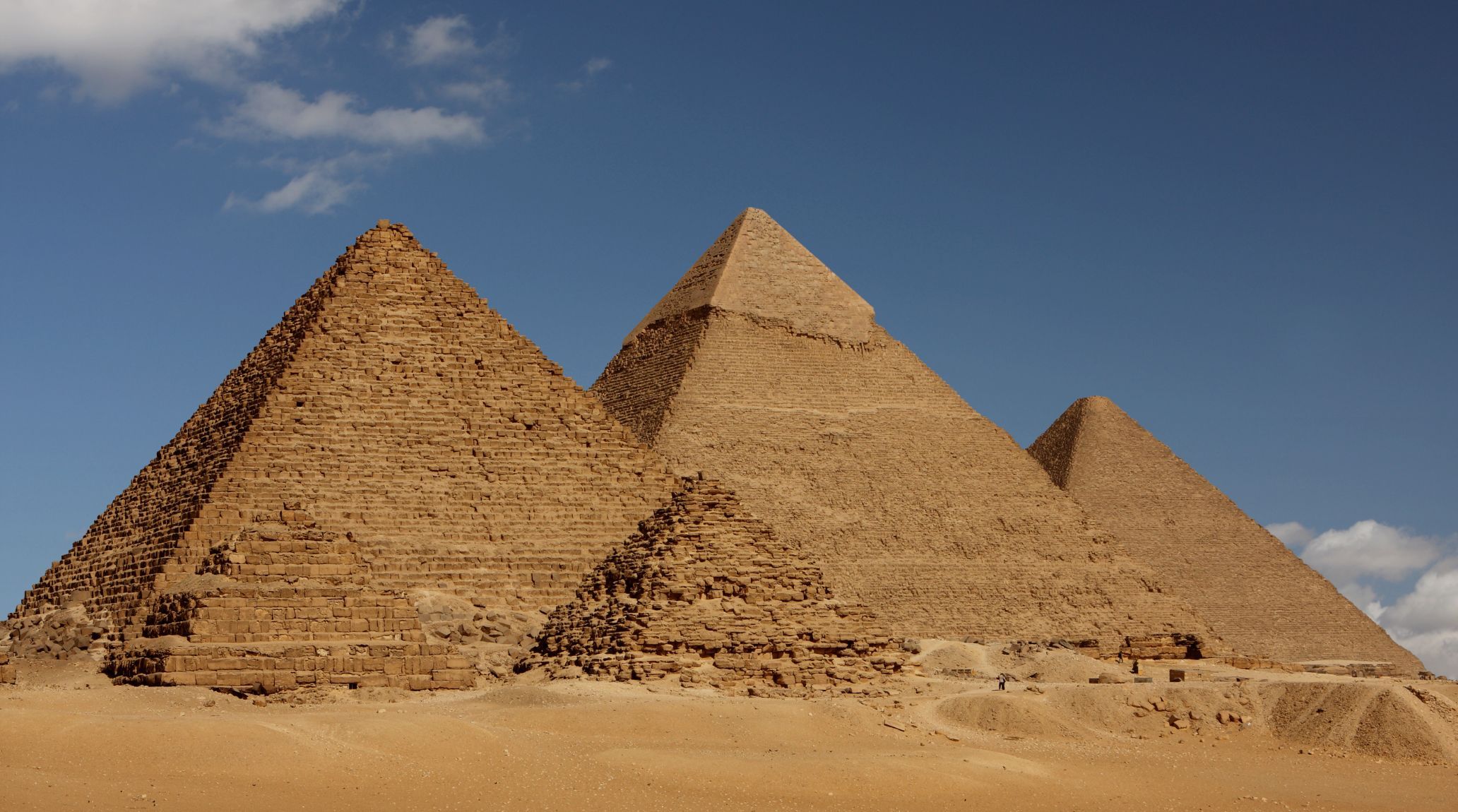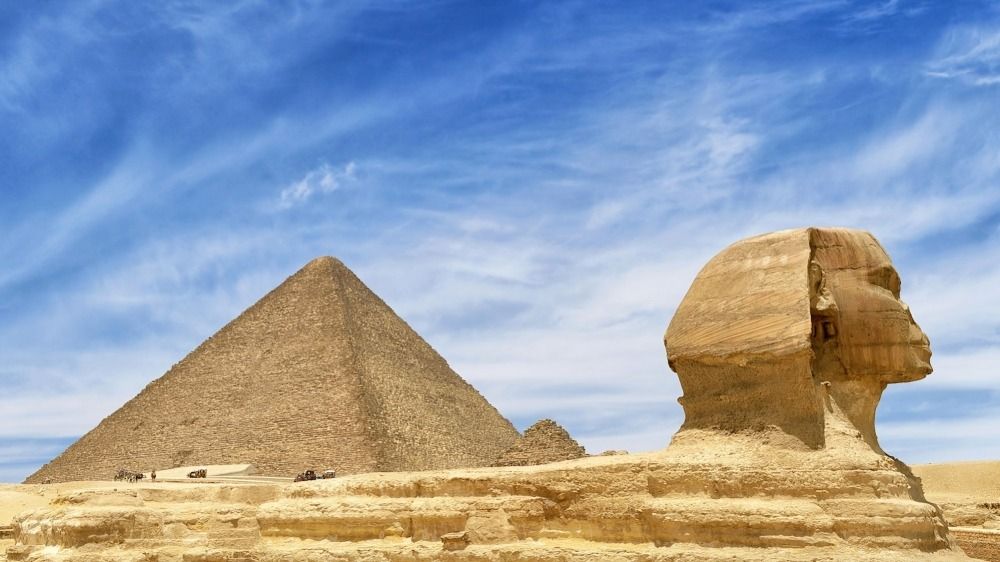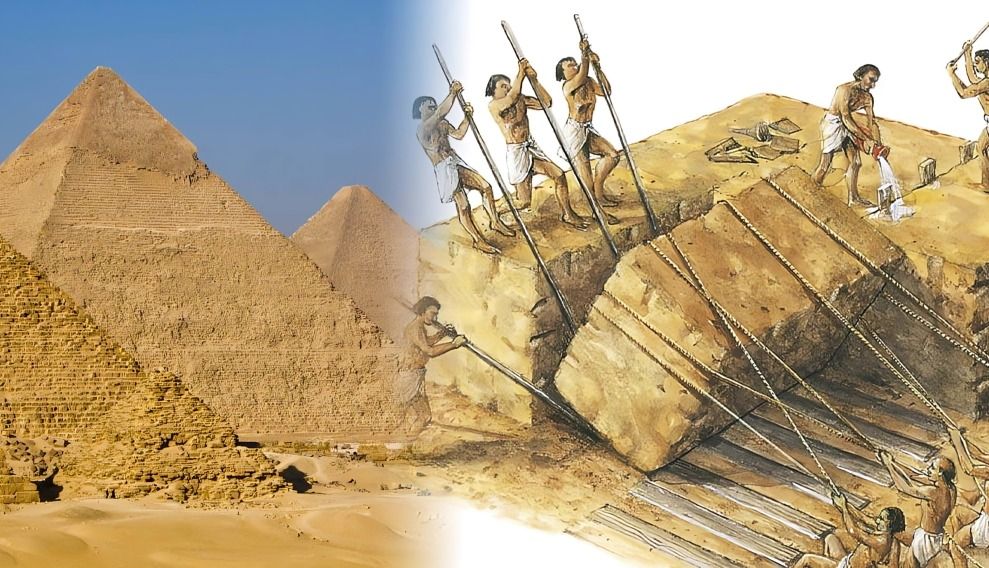
“
These ancient structures, primarily built as tombs for pharaohs, are remarkable for their size and the enigmas surrounding their construction. In this exploration of Egyptian Pyramid Mysteries, we'll uncover 20 fascinating facts about the techniques and theories behind these architectural marvels.1
1
”
The Great Pyramid of Giza, or Pyramid of Khufu, was constructed between approximately 2,550 and 2,490 B.C. This monumental structure was the tallest man-made building for many centuries. It held this record until the completion of Lincoln Cathedral's original spire in 1311 AD.1
Stones were quarried locally and from distant locations, such as Tura (limestone) and Aswan (granite). They were transported to the construction site using sleds, rollers, and possibly barges along the Nile River.2
Would you believe that some of the stone blocks used to build the pyramids weigh over 70 tons? While the average block in the Great Pyramid weighs about 2.5 tons, many are as heavy as, or even heavier than, an average elephant.3
The pyramids were constructed using massive limestone and granite blocks. Each block weighed between 2.5 to 15 tons, and the Great Pyramid alone contains an estimated 2.3 million blocks. 4

The Sphinx, built near the Great Pyramid around 4,500 years ago, has the body of a lion and the head of a human, likely resembling Pharaoh. Some researchers believe it may have undergone changes over time, with evidence of red pigments suggesting the face was once painted.
The Great Pyramid houses three main rooms: the Queen’s Chamber, the Grand Gallery, and the King’s Chamber. Recently, Egyptologists discovered two narrow tunnels extending from the Queen’s Chamber, ending at stone doors with copper handles. 5
One of the most debated aspects of pyramid construction is the use of ramps. Various theories suggest straight ramps, zigzagging ramps, or spiral ramps were employed to move the massive stones into place. 6
The Ancient Egyptians likely used the Big Dipper and Little Dipper constellations to align their pyramids with remarkable precision, achieving a north-south accuracy within 0.05 degrees. However, star alignments slowly shift over time, affecting this accuracy.7
The pyramids feature narrow air shafts that were believed to serve a religious purpose, aligning with certain stars to guide the pharaoh's soul to the heavens. 8
The exact composition of the mortar used in pyramid construction remains unknown. Despite extensive analysis, researchers have been unable to replicate the ancient formula, which has stood the test of time. 9
While the pyramids at Giza are the most famous, Egypt is home to other fascinating pyramids, including the stepped pyramids. One of the earliest, located at Saqqara, was built around 4,700 years ago as the tomb of King Djoser, featuring stepped sides and a flat top.10
The pyramids are meticulously oriented towards the true north, with minimal deviation. This precision has sparked theories about the Egyptians' advanced understanding of the earth's rotation and axis. 11
The King’s Chamber in the Great Pyramid is topped with massive granite beams, each weighing up to 70 tons. The precise placement and transport of these beams remain a marvel of ancient engineering. 12
To facilitate the movement of massive stones, some researchers believe that the ancient Egyptians used water to lubricate the sand in front of sleds, reducing friction and easing transport. 13

Some theories suggest that levers were used to lift and position the heavy stone blocks. This method would have required fewer workers and minimized the need for extensive ramps.
The Great Pyramid is estimated to have taken around 20 years to build, demanding meticulous planning, resource management, and an enormous labour force. It remains a testament to the engineering prowess and organisational skills of ancient Egypt.14
Hieroglyphic inscriptions in nearby quarries and worker camps provide valuable insights into the logistics of pyramid construction, including the organization of labor and supply chains. These inscriptions also reveal details about the daily lives and social structures of the workers involved.15
Some pyramids are aligned with the rising and setting sun, symbolizing the pharaohs' connection with the sun god Ra and their journey to the afterlife. This solar alignment underscores the religious significance and cosmic beliefs central to ancient Egyptian culture.16
The Greek historian Herodotus, who visited Egypt around 450 BCE, recorded accounts of pyramid construction. Though some details are considered exaggerated, his writings provide valuable historical context. 17
Despite centuries of study, the construction techniques of the pyramids remain partially shrouded in mystery. Ongoing research and modern technology, such as ground-penetrating radar and 3D modeling, continue to uncover new insights. 18


